Fountain of First Nations
The Victoria Centennial Fountain is the latest in my series that seeks to document places in the Greater Victoria area where First Nations are acknowledged and honoured. This fountain is one of the early examples of these public commemorations, and as such is interesting although a bit awkward in the modern context. The fountain was erected in 1962 and designed by landscape architect Robert Savery, an employee of the Province of British Columbia. It is to be found in the back garden of the Legislative precinct, behind the Legislative Library which is reflected in the puddle above. When I read the information on the plaque I was surprised to learn that there were four territories that came together as British Columbia; I did not know about the Stickeen Territory, and only had some vague idea of the The Dependency of the Queen Charlotte Islands.
As with my other posts in this series I have added this fountain to my map of markers about local First Nations which can be found here. The map is zoomed in pretty tight on this link, but if you zoom out a bit you will find other places. If you click on a marker it will link you to information and pictures in my blog about those places. Turn on the satellite image as it gives a better idea of the place as well.
Before I go further with this fountain, and because this is really a photo blog and not normally a place for wordy discourse, I should note some of the photographic aspects of the post. Many of these pictures are the first ones I have taken with my “new” late 60’s or early 70’s Nikkor-N Auto 24mm f 2.8 lens that I have adapted for use on my Canon EOS 5Dii. This meant cutting off a flange that extended from next to the rear element too far into the camera body to even allow the lens to be attached. Removing the flange was done very carefully with everything wrapped in painter’s tape and cutting with tin snips to remove the bulk of the flange and then using a small spark plug file to smooth the cut. I used an adapter ring for the mount conversion that has a chip which provides focus confirmation as well as some Exif data for focal length; it’s a real treat to upgrade an old manual lens this way. I love this lens, it is so sharp, relatively fast and much wider angle than anything I have ever owned before. It is totally guaranteed that you will be seeing more pictures through this glass. The pictures that were not taken with the wide angle used a Canon 50mm f1.4 lens.
I had in mind to photograph the fountain, and with limited time set out to take pictures when I otherwise might not have and so was silently cursing the steady rain as I approached the fountain a couple of weeks ago. However, once I started to look around, I could not have asked for better conditions to document this location, and after a while the rain eased off leaving me with ideal light and nice reflections. Below you will find quite a lot of writing about the fountain and its historical context. Of course you may just want to skip over it and look at the many photos that are lower in the post, but there is some important context here for my ongoing series on First Nations markers which I will very likely not be repeating, so I urge you to come back and read it when you have the time.
In terms of aboriginal peoples, the fountain gets off to a strange start through its organisational structure which is based on various Crown-declared territories that were amalgamated in 1862 to form the Colony of British Columbia. Apart from the Queen Charlotte Islands (now officially called Haida Gwaii) none of these bear any relation to First Nation’s territories. Each territory is represented by an animal that, in combination, are said to be symbolic of the main “totems” in use by all BC First Nations, this too is not true on a number of levels since different First Nations have different clan and moiety organisations, and some in BC don’t even organise that way. Some of the spellings of First Nations names were never in common usage, and not used at all by the 1960’s (such as Tlineit for Tlingit) which suggests that some very old historical sources of information were relied on in the background research and no anthropological ones. This strongly implies that the BC Provincial Museum anthropologists, who at that time were based in the wing of the Legislature visible in the distance beyond the library in the photo above, were not consulted about the wording. I can’t see the likes of Wilson Duff agreeing to any of this wording.
Likewise, the depiction of the sea otters seems to bear little resemblance to their actual form. The smallest one could very likely have been modelled on a drawing from the 1700’s – it looks very familiar to an etching I have seen in the past from an explorer’s volume, probably one of the Cook volumes. This is perhaps understandable since well before the 1960’s sea otters had been extirpated from British Columbia (unlike the First Nations, though maybe the artist was not aware of that fact), and the reintroduction programs had not yet commenced. The artist would have had to go to Alaska to find sea otters in the wild and in the round. Or, he could have looked at the collections in the Provincial Museum, and spoken with the natural history curators to some good effect. I suppose there is some small comfort in the fact that errors in the fountain are not solely matters aboriginal.
For my readers outside of BC, some context on First Nations status in this province might be useful. Most of BC was not settled with treaties and there were no “Indian Wars” of the type prevalent in the USA. Treaties or being conquered during a war are the two principal legally recognised mechanisms whereby lands transfer from one nation to another. Therefore, aboriginal rights and title were not extinguished in most of BC and have created tensions between the First Nations and BC/Canada for more than 100 years. Modern treaties are slowly being negotiated and signed, but in the meantime a number of very important court cases have been decided that find First Nations outside of treaty areas retain aboriginal title to all land – the title underlies that of the Crown (governments both Federal and Provincial), and therefore also underlies the titles that they have transferred to private ownership or leases. This doesn’t mean that First Nations can claim private land, but it does mean that governments have to be extremely careful and consult in deep and meaningful ways when issuing land tenures for selling land, granting mining or forestry or oil and gas permits, building roads and so on. The courts have declared that pretty much everything that happens on Crown land must be consulted about – you can imagine the complex dynamic that this has created in all aspects of development and the relations between the First Nations and governments, especially since ~95% of BC is Crown land.
It is for these reasons that I find the public markers of First Nations history, tradition and relationships with settler communities to be interesting and important. First Nations were here first, they had title to the lands that they occupied and in most instances that title was not legally extinguished. In essence the land was stolen from them, and their aboriginal rights suppressed. And this does not include the injustices that are well documented in the signing of treaties and the manipulation of usually illiterate First Nations leaders with patronising lies and bullying and unkept promises in order to obtain such signatures. When combined with an understandable lack of imagination that BC could ever go from the wilderness it was at that time of treaty signing to a rapidly developing, resource extracting, environment molesting, 21st Century province with millions of inhabitants, it barely seems reasonable for the government to take a hard line about the old treaties and the extinguishment of rights and title they contain (apart from the few treaty rights to hunt and fish and trap in perpetuity). These residual treaty rights just don’t mean much when the animals and fish are seriously stressed or gone, the land is crisscrossed with seismic and pipe lines and dotted with oil and gas wells and blanketed with farms and cities and roads. No one could have foreseen that this would happen, at least on the scale that it has. Still, I do acknowledge that the lack of foreknowledge is inherent to the nature of treaties between nations, and like this fountain, they are a product of their time, some more durable than others. So, all of this means that First Nations are constantly in the news in Canada; vilified in some quarters, misunderstood in many others and yet also supported by many people who understand that great injustices have occurred. Hence the more recent signage which in part seeks to acknowledge and in small ways to right some of the past wrongs.
Now, back to this fountain. It is very much a product of its day, and I believe its intention was a good one, to recognise the importance of First Nations in the founding of British Columbia. Given that it was conceived at a time before the Canadian constitution had been repatriated and re-drafted to include recognition of aboriginal rights and title and before the courts had spoken about their meanings, in some ways its existence is quite remarkable, and its content more understandable. If the fountain is considered in this context then I think this monument can and should be celebrated along with the more recent ones. Clearly this is the Government’s current thinking too. In a publication Place, in the Discover Your Legislature Series (which was apparently last updated in 2008) the Legislative Assembly describes the fountain in much more current language, though it (necessarily?) retains inaccuracies that are in the original. It is in fact quite fascinating to compare the language on the original plaque with that in the recent publication. The original wording is lower down in this post, the Place wording is:
“This fountain, designed by Robert Savery, celebrates the union of the colonies and territories that joined to form British Columbia in 1862. The five bronze animals depicted are historic and geographically symbolic.
The gulls and otter on the rock (centre) denote the approach from the sea.
Sea otters were the early foundation of the B.C. economy. The trade in sea otter furs led to the exploration and eventual settlement of the B.C. coast.
The eagle represents the Aboriginal societies on Vancouver Island, one of the two Crown Colonies.
The raven is the symbol of the Haida of the Queen Charlotte Islands (Haida Gwaii), one of the territories that was included in B.C.
The bear represents the interior Aboriginal societies and the mainland colony of British Columbia.
The wolf represents the Stikine territory.”
Below I give a picture of each plaque followed by a transcription of the words on them. After that are a bunch more photos, some of details and some of the setting. The last photo I took with the camera nearly in the fountain stream, without being able to frame it quite how I wanted since I could not see to set it up. However, I include it here as a reinterpretation of the fountain to show that it includes a symbol of the current political situation. The Raven, representing the Haida in this fountain, has the provincial legislature firmly in the grasp of its beak. One of the most wide ranging court decisions establishing aboriginal rights and title and the need to consult with First Nations was won against the province by the Haida. For me, this somewhat hidden view gives the fountain a more durable presence, if you care to look for it.
THE VICTORIA CENTENNIAL FOUNTAIN
ACTIVATED 2 AUGUST, 1962 BY HON. W.A.C. BENNETT, L.L.D., PREMIER
BRITISH COLUMBIA WAS FORMED FROM FOUR BRITISH COLONIES AND TERRITORIES:
THE CROWN COLONY OF VANCOUVER ISLAND 1849
THE DEPENDENCY OF THE QUEEN CHARLOTTE ISLANDS 1852
THE CROWN COLONY OF BRITISH COLUMBIA 1858
THE STICKEEN TERRITORY 1862
PLAQUES ON THE FOUNTAIN TELL THE ORIGIN OF THEIR UNION TO BECOME THE BRITISH COLUMBIA OF TODAY.
THE ANIMAL SYMBOLS ARE THOSE OF FROM WHICH ALL INDIAN SOCIETIES OBTAINED THEIR MAIN TOTEMS.
OF THE FOUR AREAS.
THE FIRST IMPETUS TO EXPLORATION AND SETTLEMENT OF THE PACIFIC NORTHWEST WAS PROVIDED BY
FUR TRADERS: THE RARE SEA OTTER DREW HUNTERS TO THE NORTH WEST COASTS. THOUSANDS OF
SKINS WERE TAKEN BY FUR HUNTERS OF MANY NATIONALITIES.
THE SEA OTTER HAS BEEN CHOSEN AS THE THEME FOR THE FOUNTAIN CENTREPIECE.
.
.
Vancouver Island, first occupied for Britain
by Captain James Cook in 1778, became a
centre for the fur trade.
Named after Captain George Vancouver, the
Crown Colony of Vancouver’s Island was
established in 1849 to buttress British
sovereignty on the West Coast.
In 1856 representative government was
instituted and a Legislative Assembly elected.
It was united with the mainland colony of
British Columbia in 1866.
The Queen Charlotte Islands
had been visited by the Spanish, French and
British, but were not named until the sailing
ship “Charlotte” charted them in 1785-1787
Queen Charlotte was the consort of George III.
No settlement ensued until
rumours of the discovery of gold and possible
American occupation led to the appointment of a
Lieutenant-Governor (Sir James Douglas) in 1852.
This dependency became a part of the mainland
Crown Colony of British Columbia in 1858.
Gold on the Fraser and Thompson Rivers
brought thousands of miners to the mainland.
In 1858, to ensure British sovereignty, the
Crown Colony of British Columbia was
created and formally proclaimed at Fort Langley
on November 19th. Its boundaries were
progressively enlarged until by 1866 all British
territory west of the Rocky Mountains was
united under the name British Columbia.
In 1871 this Colony joined the Canadian
Federation as its sixth province.
Following the rush to the Fraser River
in 1858 the miners pushed northwards
to the Nass, Stickeen and Peace Rivers.
To provide for government of the region
the Territory of Stickeen was created
in 1862. It survived only one year
when a redefinition of the boundaries of
British Columbia made it a part of the
lower mainland colony.





























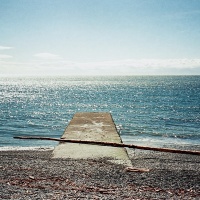
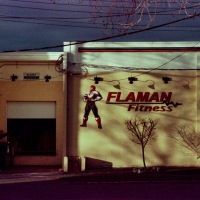
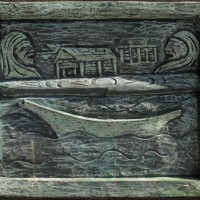
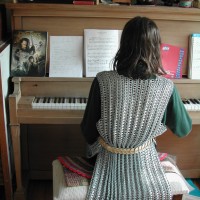
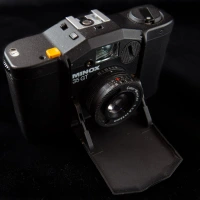
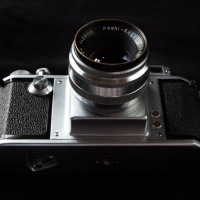


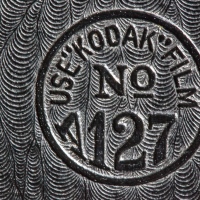


Pingback: Legislative Reflections | burnt embers
Pingback: Anniversary Links | burnt embers
Wonderful essay about a place I’ve walked past many times and barely noticed! A little-known corner of Victoria.
LikeLike
Hi Richard – thanks for checking out an old post. This was one of my longest and most involved (visually) posts. I don’t have the time or energy to do this kind of post anymore, but this one has stood the test of time I think. The fountain surr=rounds have been been completely redone in the past year – I have not had a close look, but all the plantings and so on have been replaced. I expect the fountain has been left as is, but who knows. It is time for a revisit.
LikeLike
I wonder if it might make a good essay for British Columbia Magazine http://bcmag.ca/ if you sent the some photos and a link to your essay, who knows?
LikeLiked by 1 person
That is an interesting idea Richard. I should look into it. Since I don’t have nearly enough to do right now!
LikeLike
What an EPIC post, Ehpem, a great take on the landmark fountain and the story behind it.
LikeLike
Thanks so much Toad. I was just looking at this post a few minutes ago, for totally other reasons. It is one of my favourite posts for several reasons – nice shots, lots of writing and the layout with the decorative banding. I no longer have time to do this type of post, but wish I did.
LikeLike
Yet again, another wonderfully informative post. Thank you so very much, I really do love them. Glad to see you got the adapter for your Canon, looking forward to seeing more images with the “new” lens. Ravens beak is simply awesome, what a great capture!
LikeLike
Hi David – thanks a lot. If I could have seen what I was doing, or if I was not getting the camera wet from the fountain, I would have kept on shooting till I had got the raven’s beak over one of the domes, that was what I really had in mind. But still, this works OK. I felt guilty (a tiny bit) hacking at the flange to the lens, like I might be ruining it for some Nikon film camera enthusiast in the future. But, there are lots of these lenses around, and once I got to use it, no guilt remained. It is going to be in my camera bag all the time, and used a lot I am sure. When I put it beside my 35mm f3.5 Takumar, which is a pretty nice lens, it really shows why Nikon lenses were more widely appreciated than Takumar lenses.
LikeLike
Really interesting post, ehpem, and great photos. I especially love “Raven Beak”, “Sea Otter Detail” and “Eagle Detail”. I’m embarrassed to say that I’ve never seen this fountain (or if I have, I’ve forgotten all about it), despite the fact that I was a child in Victoria when it was installed and lived there for a good number of years after that! Thanks so much.
LikeLike
Hi Laurie. I have walked past that spot and right past the fountain dozens, probably even hundreds of times since it used to be on a handy shortcut between my home and my work, and I never really noticed that it was supposed to be about First Nations until I had a really close look a few weeks ago. The beauty of blogs, they highlight all kinds of things for other people.
LikeLike
Wonderful shots, ehpem. Every photo is clear and beautiful. I love the rocks and water droplets too. I enjoyed reading about the fountain. It’s really lovely. And I enjoyed reading about how you adapted a Niikkor lens to your Canon. Awesome!
LikeLike
Thanks Judy! I was trying out the Nikkor again today, and a Takumar 35mm screw mount lens that I have also had to work on a bit to get it to function on the Canon. The Takumar lenses are all ones I have had for decades, but the Nikkor I saw second hand and bought for a small fraction of what a new auto focus length of similar quality would be, which means (a) I can afford it and (b) it makes me happy. Tomorrow’s post will have more from the 24mm lens.
LikeLike
Wonderful. Great captures and article. I like that you are true to your photography while also giving your readers a glimpse into the world around you. I love these e-visits to Victoria.
LikeLike
Thank you Ryan. Frankly, it’s too much work/time to do this very often. But I do like to stand on a soap box every now and then, preferably with some nice shots to support my words. Also, every now and then its nice to try something a bit more creative with the layout too. Which adds a lot of time to making a post.
LikeLike
I do understand. Those creative juices love to flow, but they also love to consume.
LikeLike
Hi Ehpem, lovely blog you have here. So nice to make your acquaintence, I will be back to visit.
LikeLike
Hi Alison, and nice to meet you too. Please do come back!
LikeLike
The things I do not know are little known facts and you definitely have a few in this great article with the history behind the fountain design and all that. Also a nice photoshoot of one of my favourite subjects, Victoria Parliament Buildings.
LikeLike
Hi Joseph – there sure are some little known facts. What I don’t get is if they are important enough to cast in bronze, why aren’t they more widely known? Especially since we just had a 150th birthday of some kind for BC (so many parts combining allow a celebration every few years). Which come to think of it is why the Oak Bay Songhees cairns were constructed – they used money from that BC150 program. Makes me wonder, how many of these kinds of things are erected to mark centennials and similar?
LikeLike
How much one doesn’t know about the city and Province one lives in! and what a nice way to find out!
LikeLike
Thank you mario – I am finding out too, through the lens sometimes, or by researching something prior to blogging about it and discovering all kinds of things.
LikeLike
As a WordPress photographer, I really enjoyed this post. Keep at it!
LikeLike
Hi Aaron, welcome to my blog and thanks for commenting. This is one of those blogs where I got the date wrong and it should have been published hours ago, but instead it was just a few minutes ago. Glad you found it so quickly.
LikeLike